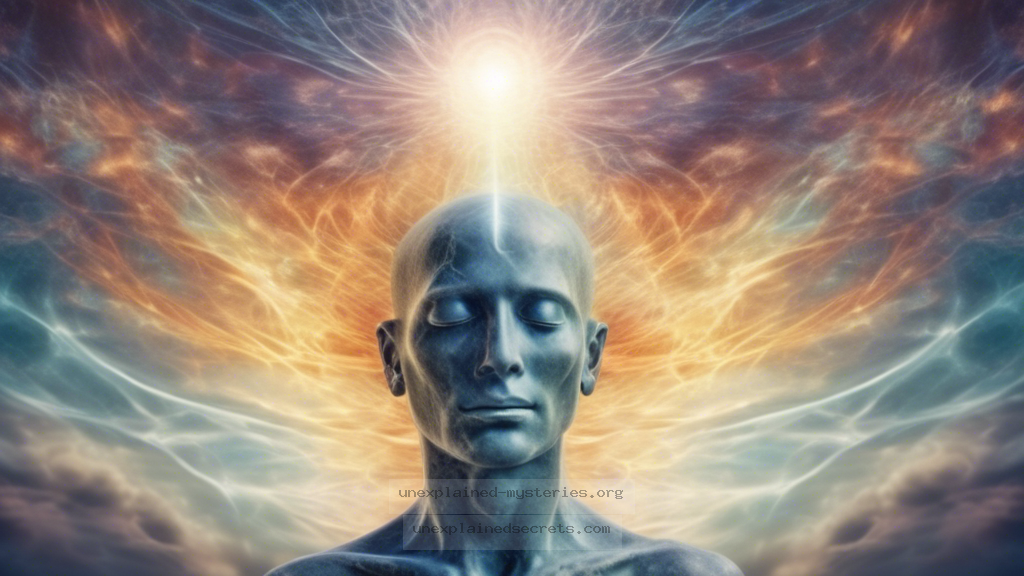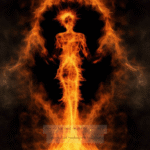What Happens to Consciousness During a Near-Death Experience?
What Happens to Consciousness During a Near-Death Experience?
The question of what happens to consciousness during a near-death experience (NDE) has captivated humanity for centuries. As we navigate the complexities of life, the mystery of consciousness and its potential continuation after clinical death raises profound spiritual and existential inquiries. Are NDEs mere hallucinations, or do they offer genuine insights into the afterlife? This blog post delves into the enigmatic realm of NDEs, exploring documented cases, historical context, and scientific perspectives to shed light on this compelling mystery.
Understanding Near-Death Experiences
Near-death experiences are often described as profound psychological events that occur to individuals who are either close to death or in a situation of intense physical or emotional crisis. These experiences frequently include elements such as feelings of peace, out-of-body experiences, tunnel visions, or encounters with deceased loved ones. Research has shown that NDEs can occur across cultures and belief systems, suggesting a universal aspect to this phenomenon.
The consistent features of NDEs have led many researchers to propose that they might reflect a deeper aspect of human consciousness, potentially providing insights into what lies beyond physical death. Understanding NDEs requires examining them from various angles, including psychological, neurological, and spiritual perspectives.
Historical Context of NDEs
The fascination with NDEs is not a modern phenomenon. Historical accounts of similar experiences can be traced back to ancient civilizations. For example, the Tibetan Book of the Dead describes states of consciousness experienced after death, providing guidance for the deceased in navigating the afterlife. Similarly, in ancient Egypt, texts like the Book of Gates offered narratives about the soul’s journey post-mortem.
In more recent history, the term “near-death experience” gained prominence in the late 20th century, particularly through the work of Dr. Raymond Moody, who published “Life After Life” in 1975. This groundbreaking book compiled numerous NDE accounts, sparking widespread interest and debate over the nature of consciousness and the afterlife.
Core Concepts and Theories of NDEs
There are several theories regarding the nature of consciousness during NDEs, ranging from physiological to metaphysical explanations. Here are a few prominent concepts:
- Physiological Theories: Some researchers argue that NDEs are brain-based phenomena, resulting from lack of oxygen, neurotransmitter release, or hyperactivity in certain brain regions during traumatic events.
- Transcendental Theories: Others propose that NDEs offer glimpses of a spiritual dimension, suggesting that consciousness exists independently of the physical body.
- Psychological Theories: Some psychologists view NDEs as defense mechanisms, where the mind creates comforting experiences in response to trauma.
Documented Cases of NDEs
Several compelling cases of NDEs have been documented, providing a wealth of material for analysis. One famous account is that of Anita Moorjani, who, while in a coma due to cancer, experienced profound insights about her life and purpose. She described feeling unconditional love and acceptance and reported that her experience was transformative, leading to her eventual recovery.
Another notable case is that of Eben Alexander, a neurosurgeon who had a near-fatal brain infection. Despite being in a coma with minimal brain activity, he reported an elaborate NDE involving a journey through realms of consciousness. His account challenges the conventional understanding of consciousness as solely brain-dependent.
Scientific Research on NDEs
The scientific community has increasingly shown interest in NDEs, with numerous studies aimed at understanding the phenomenon. Researchers like Dr. Sam Parnia have conducted studies on cardiac arrest patients, aiming to gather data on consciousness during clinical death. One significant finding is that many patients have reported auditory and visual experiences while being clinically dead, suggesting a level of awareness that challenges traditional views of consciousness.
However, the scientific exploration of NDEs is not without controversy. Critics argue that NDEs can be explained by physiological responses to trauma or stress, while proponents suggest that these experiences could provide vital clues about the nature of consciousness itself.
Practical Implications of NDEs
The implications of NDEs extend beyond the individual experiences, influencing various fields such as psychology, philosophy, and spirituality. For those who have undergone NDEs, the experience can lead to profound life changes, often resulting in a greater appreciation for life, a desire to pursue altruism, and a diminished fear of death.
In therapeutic contexts, understanding NDEs can help professionals address patients’ existential questions and fears surrounding death. This can be particularly crucial in end-of-life care, where patients may benefit from discussions about NDEs and their potential implications for consciousness and the afterlife.
Alternative Perspectives on NDEs
While many view NDEs through a spiritual lens, alternative perspectives exist. Skeptics often emphasize the neurological and psychological explanations for these experiences. They argue that NDEs can be attributed to brain chemistry changes during trauma, leading to vivid hallucinations or dreams. This viewpoint encourages a focus on the biological aspects of human experience, challenging the notion of a separate, enduring consciousness.
Additionally, cultural context plays a significant role in shaping NDE narratives. Different societies interpret these experiences through their unique spiritual beliefs, leading to varied accounts that reflect cultural values and norms. Understanding these alternative perspectives is essential for a holistic view of NDEs and their implications for consciousness.
Common Misconceptions About NDEs
Despite growing interest in NDEs, several misconceptions persist. Here are some common myths:
- NDEs are only associated with near-death situations: While commonly linked to life-threatening events, NDE-like experiences can occur in various contexts, including during meditation or traumatic experiences.
- All NDEs are positive: While many individuals report uplifting experiences, some describe distressing or negative elements, challenging the notion that all NDEs are inherently positive.
- NDEs prove the existence of an afterlife: While many interpret their experiences as evidence of life after death, skeptics argue that these experiences can be explained by naturalistic phenomena.
Best Practices for Investigating NDEs
For researchers and individuals interested in exploring NDEs, several best practices can enhance understanding:
- Interdisciplinary Approach: Combining insights from psychology, neuroscience, and spirituality can provide a more comprehensive understanding of NDEs.
- Qualitative Research: Collecting personal accounts through interviews can yield rich data, allowing for deeper insights into the subjective nature of NDEs.
- Cultural Sensitivity: Acknowledging the cultural contexts of NDEs is crucial for interpreting experiences accurately.
Future Developments and Ongoing Research
As interest in NDEs continues to grow, future research may delve deeper into the neurological underpinnings of these experiences and their implications for our understanding of consciousness. Advancements in brain imaging technology may allow for more detailed examinations of brain activity during near-death situations, potentially revealing insights into the nature of consciousness itself.
Moreover, interdisciplinary collaborations between scientists, theologians, and philosophers could foster a more nuanced exploration of the implications of NDEs for our understanding of life, death, and what may lie beyond.
Conclusion
The mystery surrounding what happens to consciousness during a near-death experience continues to inspire inquiry and debate. While scientific and psychological explanations offer valuable insights, the spiritual dimensions of NDEs invite deeper reflection on the nature of existence and the possibility of life beyond death. As we explore these experiences, it is essential to approach them with openness and curiosity, recognizing the profound impact they can have on individuals and society at large.
Ultimately, whether viewed through a scientific, psychological, or spiritual lens, NDEs challenge us to reconsider our understanding of consciousness and the potential for an existence beyond our physical reality. As research progresses and more stories emerge, we may inch closer to unraveling one of humanity’s most profound mysteries.
Other Articles
Recent Posts
- What Happened to Flight MH370? The Conspiracy Theories That Still Haunt Us
- What Secrets Lurk Within the Walls of the Infamous Trans-Allegheny Lunatic Asylum?
- What Evidence Supports the Existence of Bigfoot in the Pacific Northwest?
- What Happened to the Indus Valley Civilization? Unraveling the Mysteries of Ancient Urban Life
- Can Telepathy Be Scientifically Proven Through Laboratory Evidence?







